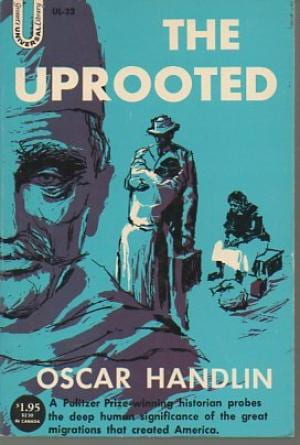by contributing editor Yitzchak Schwartz
In her 2000 Oxford Handbook of Jewish Studies article on American Jewish history, historian Hasia Diner notes a new trend in the field in which a growing number of works were focusing on Jews’ self-understanding and self-presentation. Today, such works seem to have taken over the field, displacing older social and intellectual historical narratives and approaches. These works reflect approaches to social history that gained popularity during the 1990s, trends most frequently found in scholarship that identifies with ethnic or cultural studies. They generally seek to analyze a specific sub-culture, in this case American Jews, rather than situate the same within broader narratives of American cultural history. Research taking this approach in American Jewish Studies generally interests itself in how American Jews created a hybrid identity through processes of selectively acculturating into the middle class. Scholars working in this framework also have a strong interest in how American Jews resisted acculturation and American bourgeois norms. This approach bred important scholarship in the field. Today, however, it dominates the field to such an extent that it severely limits how American Jewish historians approach their subject matter.

This monument to Religious Liberty was erected in Central Philadelphia in 1876 by the Independent Order of Bnai Britth. It asserted its Jewish sponsors’ identity as patriotic citizens but it also served to publicly associate Judaism with values of religious liberty, reflecting liberal understandings of Judaism embedded in the intellectual climate of the time. It now stands outside the National Museum of American Jewish History on the Independence Mall (image via Wikipedia)
Since the Second World War, social-historical approaches have dominated American Jewish history. As historian Jeffrey Gurock documents in an article on the history of the American Jewish History journal (published under various titles from 1896 until the present), postwar scholars saw social history as a means of inserting Jews into the larger sweep of American history. A classic example of this kind of mid-century social historical work can be found in Moses Rischin‘s 1964 Promised City, a history of Jews in New York. Rischin’s book explores how the Eastern-European Jews of New York became acculturated into the American middle class. Like other practitioners of the new social history, he presents Jewish immigrants as having been full participants in creating American society despite the formidable obstacles they faced, a narrative that ultimately suggested, as Oscar Handlin puts it in his The Uprooted, that “immigrants were American history.” To answer his question, Rischin offers a detailed and carefully reconstructed description of this process that considers, among other things public school education, residential patterns, moves to second settlement areas and changes in occupational patterns.
The 2012, three-volume history of the Jews of New York City of Promises, on the other hand, asks a different kind of question, namely how did Jewish immigrants to America and their children create a new identity as American Jews that in turn led them to see themselves and their religion in new ways. The three books in the series accordingly look to how experiences such as immigration to New York, adjustment to American social realities, and so forth—the same historical vectors analyzed by Rischin—were experienced by New York’s Jews and how they came to think about their Judaism. Annie Polland and Daniel Soyer’s narrative of German Jews in New York during the mid-to-late nineteenth century in City of Promises’ second volume markedly differs from older works on this period. Polland and Soyer describe German Jewish immigrants to New York City as striving to simultaneously reconcile and integrate their identities as Jews with their newly-assumed identities as Americans. For example, they describe how upwardly mobile members of this group erected grand Moorish synagogues that at once inscribed their members status as prominent and wealthy Americans in the public sphere even as they articulated their Jewishness through such an unique and highly visible style that was popularly associated with eastern peoples.
City of Promises provides a fresh approach to a well-traversed subject, but its central framework, the notion of identity, seems limiting at times. The way in which Polland and Soyer’s volume approaches American-Jewish religion and religious thought is a good example of how this is the case. Polland and Soyer present Reform and its architecture as a means of reconciling American and Jewish identity, but how did these developments relate to larger developments in American religion at the time? Considering that Reform Judaism developed in the United States at the same time as a much larger liberal religious movement perhaps an intellectual historical approach would enrich our understanding of this period in American Jewish history.

Social histories like Handlin’s The Uprooted sought to locate the exotic immigrants depicted on the original dust jacket as integral parts of, not outsiders to, American history. Identity and opposition, however, have only become interests in the field in the last twenty to thirty years.
In his 2006 Immigrant Jews and American Capitalism, economic historian Eli Lederhendler levels a more general critique of the identity paradigm, arguing that it often discourages historians from digging deeper and uncovering structural causes for the phenomenon they discuss. In particular, Lederhendler challenges the oft-repeated idea that Jewish participation in left-wing political and labor movements was a result of a deep, pre-immigration Jewish identification with left-wing politics. Rather, he argues that Jewish union politics ought to be understood primarily as an effort to achieve upward mobility. Lederhendler sees his approach as explaining why Jews so often left the labor movement once they achieved middle class status. I would add that American-Jewish historians might also be well-served to situate this history in the context of the intellectual-historical literature on American liberalism. Lederhendler sees the popularity of the identity-driven models of writing American Jewish history more as the result of the post-1960s development of a pan-American Jewish ethnic identity than of the way Jews in the early twentieth century actually identified themselves, which was far more multifarious. Lederhendler’s book has been well-received by many in the field, but few practitioners have responded to his challenge to move way from identity-driven approaches to American Jewish history.
Another related tendency in cultural studies-inflected works on American Jewish history that at times leads to a flattening of its subject matter is its celebration of opposition to integration into the American mainstream. The field of American Yiddish studies in particular often approaches Jews as an oppositional culture. The radical nature of some of the most prominent voices in the early twentieth century Yiddish press and Jewish mass politics renders this an immediately attractive approach.The most influential work in this vein likely remains Tony Michels’ 2009 A Fire in their Hearts: Yiddish Socialists in New York, which explores the unique socialist-Jewish identity forged by Jewish socialists in New York. Ultimately, the story ends in tragedy as Jews forsook radical politics and were absorbed into the middle class.However, Yiddish Studies over the course of the last twenty years engages almost exclusively with these radical and leftist elements in the Yiddish community. One only has to peruse the recent Oxford Bibliography of Yiddish to see that the study of Yiddish literature and social movements has ballooned since 2000, before which most of the studies cited in the bibliography are of a linguistic nature.
In his All Together Different: Yiddish Socialists, Garment Workers, and the Labor Roots of Multiculturalism (2011), Daniel Katz traces the Jewish-dominated International Ladies’ Garment Workers’ Union’s (ILGWU) efforts to incorporate black and other racial minorities. He argues that the immigrant Jewish women of the ILGWU espoused an early cultural pluralism and were forerunners of multiculturalism’s emergence on the American scene. Other work on Yiddish theater, literature and politics likewise stresses the Jews’ proletarian and outsider status in America. They suggest that American Jews’ history matters not only vis-à–vis Jews and Americans, but in the history of multiculturalism and oppositional cultures at large. However, these studies leave unexplored the vast swaths of Yiddish language culture in the United States that were more accommodating to middle class norms. An intellectual historical approach might help clarify what exactly Yiddish socialists thought and how they fit into larger intellectual trends at the time, both Jewish and American.
This last point reflects another problem engendered by the cultural studies approach’s dominance of American Jewish history, that there is less of much-needed, broader social and intellectual historical works being published in the field. Scholarship in cultural studies often seeks to illuminate strands within the history of a group that are tied to its concerns of identity formation and resistance rather than present larger picture histories. However, in many areas of American Jewish history there is a dearth of such work—work that remains a necessary foundation for cultural studies scholarship.
For example, a great deal of recent scholarship looks to how Jews crafted a public and communal identity as white. They draw in particular on Matthew Frye Jacobson’s Whiteness of a Different Color (1999). In his The Right to Sing the Blues: African Americans, Jews and American Popular Song, American studies scholar Jeffrey Melnick finds Jewish involvement in jazz and blues, musical genres originating in African American contexts, as expressing Jews identification with black culture as well as their efforts to distance themselves from blackness. He argues that Jews performed black music so as to avoid being considered actually black. In his review of this book, social historian Andrew Heinze first notes that this book did not deliver on its promise to provide the “much-needed” history of “Jews and American popular song,” even as it did provide “an instructive analysis” of parts of that history. Heinze further notes that like Melnick’s monograph replicates a weakness of many works in whiteness studies more generally, that it assumes without sufficient evidence that Jews ever actually faced a significant threat of being characterized as “black” even as they were certainly considered less than “white.” Melnick thus infers broader claims from his readings of song lyrics and black and Jewish discourses about their music than may be warranted given the social and intellectual realities of the time. A stronger social history of Jewish-black relations would prove necessary before a historian could make such larger conclusions. Similarly, Aviva Ben Ur’s Sephardic Jews in America (2009) yields the the first discrete narrative of Sephardic-Jewish-American history. However, this monograph actually comprises a series of studies focusing on Sephardic identity in the United States. The book is an extremely strong scholarly contribution to the field and provides compelling “close readings” of facets of American-Sephardic history. Yet who will write the much-needed social and intellectual histories of topics like Sephardic Jews in America?



June 20, 2016 at 10:58 am
Reblogged this on Talmidimblogging.
July 23, 2018 at 12:12 pm
Reblogged this on Project ENGAGE.